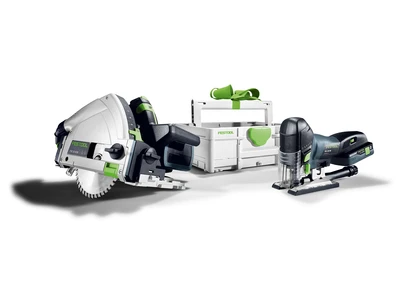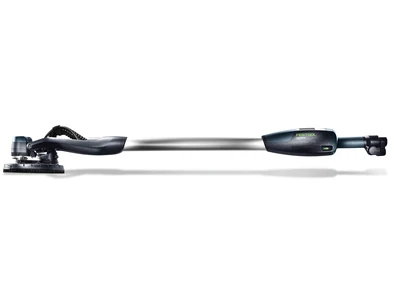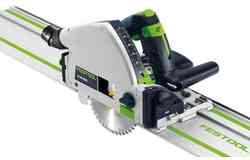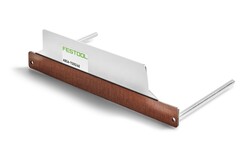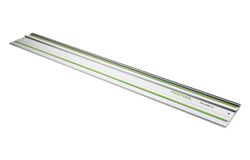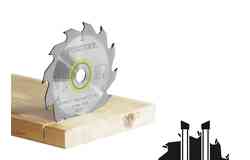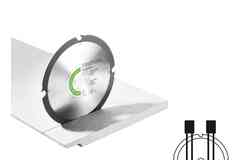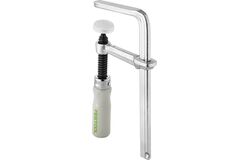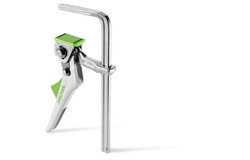Cutting plasterboard

Description
Plasterboard panels consist primarily of gypsum, and their surfaces are sheathed in a bonded special cardboard designed for their intended application.
Cement-bonded chipboard consists of flat pressed panels with a specific proportion of cement for diverse applications in interior and exterior construction.
Problem:
Using a jack saw to cut these materials to size requires a great deal of time and effort, and results in imprecise cuts. Scoring and snapping the boards is also imprecise and requires a lot of effort. These methods also mean that finish planing is required whenever the edges of the panels need to be formed to create outside corners or visible edges.
Solution:
The plasterboard can be sawed easily using a plunge-cut saw, a guide rail and a dust extractor – accurately, quickly and cleanly.
Note:
For materials with a high proportion of cement, a diamond saw blade must be used.

Tools/accessories
Preparation/set-up
-
Setting the circular saw onto the guide rail:
- Set the guidance jaws on the saw table for the circular saw onto the guide rail using a screwdriver so that there is no play.

-
- Set the circular saw to a depth of 15 mm on the cutting depth scale.

-
- Saw in the splinter guard along the entire length of the rail at speed level 6. The cutting edge is now both the guide edge and the scribe line at the same time.

-
List:
This list shows which materials can be cut using a plunge-cut saw. These statements refer to the specific manufacturers.
Manufacturers, designations, descriptions- Fels fermacell gypsum fibreboard, building material class A 2.
- Knauf drywall plasterboard panels, various building material classes, Fireboard plasterboard, building material class A 2.
- Norgips Lafarge plasterboard panels, various building material classes

Procedure
-
Mark the desired cut on the plasterboard with a pencil before cutting.

-
Place the guide rail according to the scribe mark and secure it tightly using the fastening clamps if necessary.

-
Connect the portable circular saw to the dust extractor.

-
Set speed level 1 to 3 on the circular saw.

-
Switch on the tool and cut the plasterboard at a moderate feed rate.

-
Our illustrated guides and work results are documented working steps that we have performed in practice. They are individual examples and do not guarantee or promise that users will obtain the same results. The results will depend on the user's experience and skill, as well as the material being used. Illustrated guides do not replace any Festool operating manuals and/or safety instructions. Liability for ensuring that the information, instructions and applications are free from content defects and defects of title, in particular with regard to the absence of defects, correctness, freedom from third party intellectual property rights and copyrights, completeness and fitness for purpose, is excluded. Claims for damages made by the user, regardless of their legal basis, are excluded. These liability exclusions are not applicable if the damage was intentional or caused by gross negligence, or in cases of statutory liability.
We cannot accept liability for damage resulting from defects.↑



